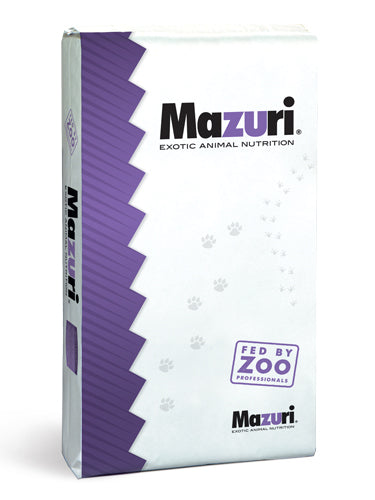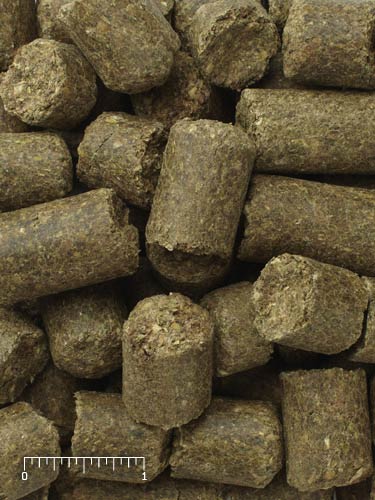Every exotic animal deserves the right nutrition
| Crude protein not less than Crude fat not less than Crude fiber not more than Ash not more than Calcium not less than Calcium not more than Phosphorus not less than Salt not less than Salt not more than Sodium not more than Selenium not less than Selenium not more than |
24.0% 4.0% 12.0% 10.0% 0.95% 1.45% 0.90% 2.0% 2.5% 1.25% 0.60 ppm 0.72 ppm |
Wheat middlings, dehulled soybean meal, dehydrated alfalfa meal, cane molasses, salt, soybean oil, calcium carbonate, dicalcium phosphate, monocalcium phosphate, calcium lignin sulfonate, calcium propionate (a preservative), dl-alpha tocopheryl acetate (form of vitamin E), calcium pantothenate, biotin, choline chloride, thiamine mononitrate, nicotinic acid, cholecalciferol, vitamin A acetate, riboflavin, vitamin B12 supplement, zinc oxide, preserved with mixed tocopherols (form of vitamin E), l-lysine, rosemary extract, citric acid, copper sulfate, calcium iodate, magnesium oxide, cobalt carbonate, ferrous carbonate, sodium selenite, manganous oxide.
- Feed 10 pounds per animal per day to adult elephants with 90 pounds of hay.
- Offer hay and/or browse at a level to provide the remainder of the diet. Animals generally should be fed 1-3% of body weight per day.
- The amount of diet the animal requires will vary according to its species, age, size, life stage, health status and activity of the animal and the environmental temperature.
- If supplemental vitamin E is desired, we recommend the use of Emcelle® Tocopherol (0010111), a micellized, water-dispersible vitamin E solution. The recommended usage of Emcelle® Tocopherol is 2-6 IU per kg body weight. Emcelle® should be provided as a top dressing to the dry portion of the diet or may be provided in drinking water. Supplemental vitamin E may be desired, for the following reasons:
- low plasma tocopherol levels (below 0.2 mg per dL), continual confinement feeding of animals, feeding poor quality, long-stored roughages, feeding milk replacers that contain tocopheryl-acetate, feeding high levels of polyunsaturated fatty acids.
- Always provide animal with plenty of fresh, clean water.
For best results, store contents of open bag in container with sealing lids. Store in a cool (75°F or colder), dry (approximately 50% RH) location. Use within 1 year of product manufacturing.
Ask Our Experts
Get nutrition advice you can trust from experts who understand the unique nutritional needs and behaviors of your exotic animals.
Get Advice
